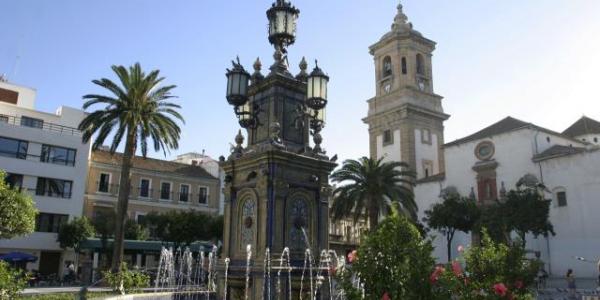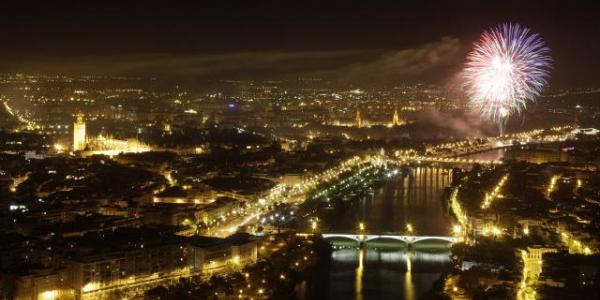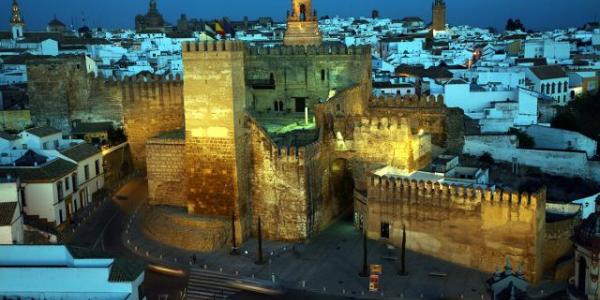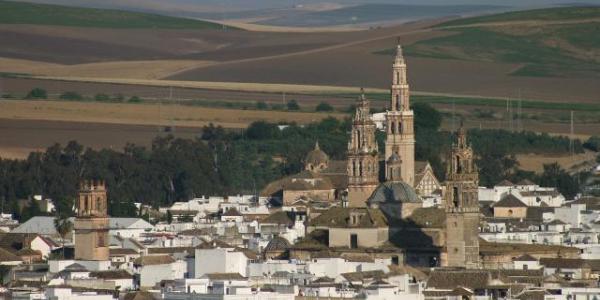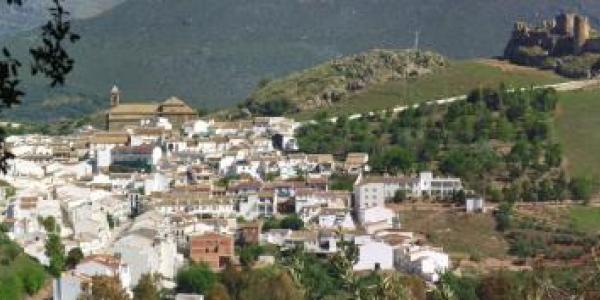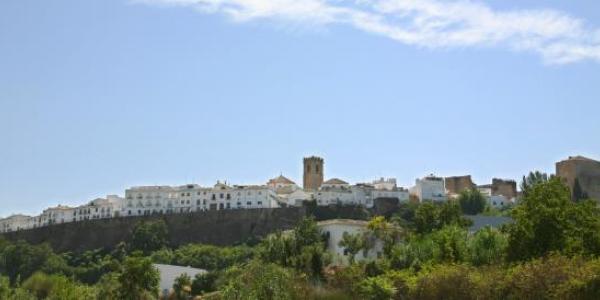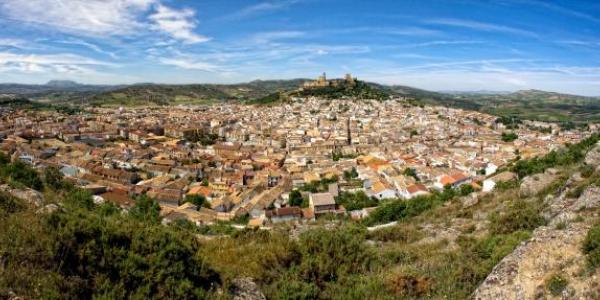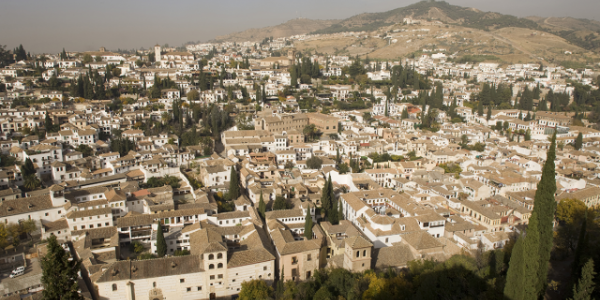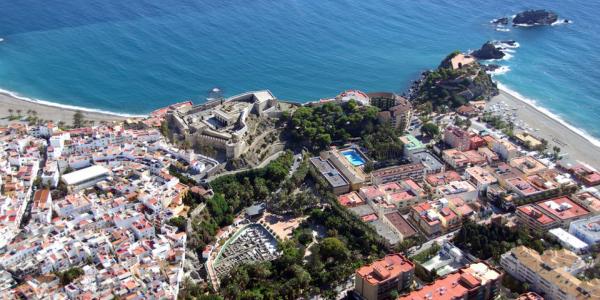The Big River, the Guadalquivir, is a good starting point for a visit to the city. The stamp of al-Andalus is evident from the start, the slightly oriental touch which floats in the air and about the town.
Gold Tower

It was built around 1221 by the Almohads. Made of stone blocks, with a turret of bricks and tiles, it houses an interesting Naval Museum, which emphasizes the close relationship Seville has always had with navigation. The Tower formed part of the defensive system of the al-Andalus city.
The Reales Alcazares (Royal Fortress)

They comprise an extensive fortified Palatine complex. Following al-Andalus construction patterns, it is the fruit of repeated addition and reform to existing buildings, which form a delightful labyrinth of spaces styles and materials. From the construction of the Caliph´s precinct, dar al-Imara, on top of the foundations of other buildings and previous fortifications, at the beginning of the 9th c., the Abbadid Kings, the Almohads and later Alphonso X, Alphonso XI, Pedro I, the Catholic Monarchs, Charles V, Philip V and Isabel II, were all responsible for important reforms. The original construction can be seen in the outer walls, surrounding the Patio de Banderas. The main entrance, The Lion´s Gate, leads immediately to the Hall of Justice, decorated in the fine Mudejar filigree of the 14th c. and to the Patio del Yeso (plaster), flanked by the arcades of an Almohad Palace. The Patio de la Montería (hunting) appears dominated by the spectacular façade of the interior Alcazar, that of the Palace of Pedro I, the legendary monarch who, in the second half of the 14th c. ordered the building of a splendid residence, the most precious jewel of Mudejar Art. Its recessed entrance goes through to the residential area, built around the lovely Patio de las Muñecas (dolls). The official area adjoins this, centered around the marvelous hall of the Salon de Embajadores, based on King al-Mutamid´s legendary Hall of Pleiades, with a domed vault, glazed tiling and arches. At the doorway, the Patio de las Doncellas (Maidens) gives light to the royal chambers and communicates with the Gothic palace built by Alphonso X and later reformed. Beyond it, lies the exuberant vegetation of the Alcazar´s Gardens.
Seville´s Cathedral

It is the largest church in Christendom and on the site of the Great Mosque, built by the Almohads at the end of the 12th c. standing on an enormous rectangular plot of land at the front of the slender Giralda Minaret, there are still some remains of the original building, being the Patio of Ablutions and the Patio of the Orange trees, with their galleries of pointed horseshoe arches. The Tower, symbolizing the Spanish-Muslim heritage and mixture of cultures, was constructed in the time of the Almohad caliphs, Yusuf and al-Mansur and was completed in 1198. In 1568 Hernán Ruiz added a Renaissance belfry, crowned by a weather vane in the form of the figure which gives it its name: The Giralda



